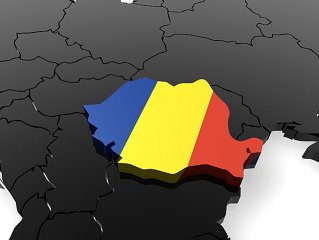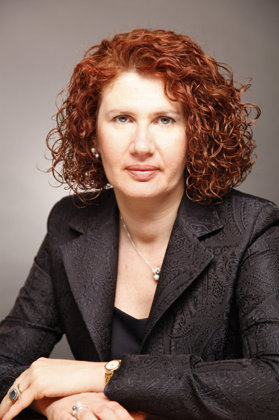www.zfenglish.com - Last update 06:26
General Information about Romania
08.02.2013
Romania is a country of considerable natural beauty, with numerous attractions for the visitor. It has seen significant economic growth in the last two decades, spurred on by EU accession in 2007. Although the economy has seen a slowdown since 2008, the decline has not been as marked as in many euro zone countries, and there are still many sectors with potential for growth. The information contained in this document was last updated in May 2013.
Passports, Visas and Residence Permits
Romanian visas are not required for nationals of EU/EEA countries or of Canada, Japan, USA. Also, Romanian short-stay entry visas are not required for nationals of Argentina, Australia, Bahamas, Barbados, Brazil, Brunei, Chile, Costa Rica, El Salvador, Guatemala, Honduras, Hong Kong Special Economic Zone, Israel, Macao Special Economic Zone, Malaysia, Mauritius,Mexico, Nicaragua, New Zealand, Panama, Paraguay, San Marino, Seychelles, Singapore, South Korea, Uruguay, Venezuela, all of whom may stay in the country up to 90 days within a six month period without the need to obtain any official permission.
. However, a Romanian long-stay visa and a residence document are mandatory if they intend to stay in the country for a period exceeding 90 days.Nationals of countries considered by the Romanian authorities to present a high immigration risk are subject to strict visa requirements and they must follow a special procedure to obtain a visa prior to their arrival. This procedure involves obtaining an invitation approval from the Romanian immigration authorities. Visas are obtained based on this invitation approval requested by a Romanian individual or company. Exceptions apply to certain categories provided by law. A bank deposit guarantee is also needed, although there are some exemptions from this requirement.
Non-EU individuals who come to Romania for work purposes or want to stay longer than 90 days within a six month period must apply for a Romanian residence permit. This is a document issued by the Romanian General Inspectorate for Immigration and is generally renewed on a yearly basis. A number of documents must be provided to secure the permits, the most important of which are evidence of employment in Romania (a work permit is required in nearly all cases), evidence of contribution to the Romanian state health system, medical certificate (most good private clinics will arrange the medical examination) evidence of accommodation in Romania (ownership documents or a rent contract), a copy of the passport used to enter the country, and at least two passport sized photographs.. The residence permit is issued within one month, although the passport is not retained during this period.
Highly-skilled employees will obtain an EU Blue Card, which is a special type of residence permit for employment purposes issued to highly-skilled qualified non-EU local hires. Proofs of high-skills / qualifications are mandatory. This type of residence document grants the right to reside and be employed in Romania in a highly-skilled position and is generally issued for up to two years validity (depending on the validity of the employment contract), renewable. After an 18-month legal stay, the EU Blue Card holder can move to another EU Members State to occupy a highly-skilled position.
For EU nationals, five year registration certificates are issued, on production of an employment contract or evidence of means of support, as well as proof of social health insurance (a European health card is acceptable in most cases).
Extensions of residence permits must be applied for at least 30 days prior to the expiry date of the old one, otherwise a fine is payable. Fees are subject to change, and the laws governing residency are altered frequently.
For the latest information on entry and immigration requirements see KPMG in Romania’s RoVisa Express iPad app, available in the Appstore. http://bit.ly/12usWxH
Hotel and Long Term Accommodation
Romania offers a wide range of hotel accommodation. Major hotels offer wi-fi, e mail, fax, telex and international telephone services. A passport or residence permit is required to register at any hotel.
Because of the relatively high cost of hotel accommodation in Romania, many longer term or frequent visitors find it more convenient and cost effective to rent accommodation in an apartment. Short term rentals on a daily basis are widely available.
Credit and debit cards are widely accepted in hotels in Bucharest and major cities, but might be more difficult to use in remote areas. Payment for accommodation in city hotels can usually be made in foreign currency as well as lei.
Euros, U.S. dollars and other major currencies are easily exchanged and are widely accepted. It is advisable to reserve hotel accommodation before arriving in Romania, especially during peak periods.
Air Transportation
The Romanian airline, TAROM, serves major points in Romania, Europe, Asia and North America. International full service carriers currently serving Romania include Air France, Alitalia, Austrian Airlines, British Airways, Delta, El Al, Lufthansa, KLM, Olympic, Turkish Airlines, Aeroflot (Russia), Balkanair (Bulgaria), CSA (Czech Republic and Slovak Republic), and LOT (Poland). Romania is also well served by low cost carriers, such as Wizzair and Blueair.
In Bucharest, all flights now use Henri Coanda (formerly Otopeni), which is Romania’s main international airport. (The smaller Bucharest Baneasa airport, which used to be served by low cost carriers, was converted into an airport 100% dedicated to business air traffic in March 2012). There are 14 other airports in Romania; Timisoara, Arad, Oradea, Cluj, Targu Mures, Sibiu, Satu Mare, Baia Mare, Iasi, Suceava, Craiova, Bacau, Tulcea and Constanta. Some are served by international flights and all are connected to Bucharest by TAROM’s domestic services.
Taxis are readily available at airports, although unofficial ones frequently overcharge. Many good hotels arrange airport transfers, often without extra cost.
Ground transportation
The Romanian road system is fairly undeveloped, with a very limited highway network, but new highways are currently under construction and existing national roads are being upgraded. Rail travel is fairly reliable and cheap, although quite slow, and the condition of the rolling stock can be poor. Sleeping car services operate on long distance routes.
Sea Ports
The biggest port in Romania and in the entire Black Sea region is Constanta. It can host vessels of over 150,000 tones. Mangalia and Sulina are free ports. There are also several river ports on the Danube: Turnu Severin, Giurgiu, Calarasi, Cernavoda, Orsova, Turnu Magurele and Oltenita.
Braila, Galati and Tulcea are both sea and river ports.
Geography and Population
Geographical Location
Romania is situated in South-East Central Europe, to the north of the Balkan Peninsula, on the Lower Danube, bordered in the southeast by the Black Sea. The country is crossed by the parallel of 45° F latitude north and by the meridian of 25° longitude east, being located midway between the North Pole and the Equator, and midway between Europe's Western and Eastern extremities.
Neighbors
Romania is bordered by the Black Sea to the southeast, Bulgaria to the south, Serbia to the southwest, Hungary to the west and Ukraine and the Republic of Moldova to the north and east.
Population
The Romanian population is 19,599,506, according to the 2011 census, of which 88.6% are of ethnic Romanian origin. There is a significant ethnic Hungarian minority, mainly located in the Western province of Transylvania, representing 6.5% of the total national population, a Roma population of 3.2% and a small percentage of other ethnic groups.
(2011 census figures)
Climate
The climate varies considerably from one part of the country to another, but is generally considered to be continental. There are four clear-cut seasons, with an average temperature of -5°C in wintertime and 24-30°C in summertime, and average annual rainfall of ca. 640 mm. Bucharest has warmer winters than most of the country, with temperatures on average a few degrees above zero, but with occasional cold spells.
Official Language
The official language, spoken by the majority of the population, is Romanian. It is the language taught in schools and spoken in national institutions. The Romanian language is derived from the Latin used in ancient times in the Roman provinces of Dacia and Moesia. It has a 31-letter Latin alphabet and is very similar to French, Italian and Spanish, with some Slavic influences.
Hungarian is also used, mostly in the northeastern part of the country. Other languages are also spoken by small numbers.
Standard Time
The standard time is GMT + 2 hours (East European Zone Time). Summer time is GMT plus 3 hours, from late March to late October. The spring and autumn change is synchronized with the rest of Europe, so Romania is always one hour in advance of France, Germany, Austria etc.
Area
Romania covers about 238,391 square kilometers of land, which makes it a medium sized European country. It is approximately the same size as England and it ranks 13th in size in Europe.
National Day
1 December (the anniversary of the Great Assembly held at Alba Iulia in 1918, which brought about the union of all Romanians into a single state).
Legal Holidays
1 and 2 January - New Year; Easter Monday (Orthodox); 1 May- May Day; the Monday after Pentecost (normally 7 weeks after Orthodox Easter); 15 August (Dormition of the Virgin Mary); 30 November – St. Andrew; 1 December - National Day of Romania; 25 and 26 December - Christmas.
Religion
Nearly all the population is Christian according to the 2011 census, of which a large majority is Orthodox (85.9%). 4.6% are Catholic. Around 6% belong to various Protestant denominations, the most important of which is the Hungarian Reformed Church (3.2%). Romania has a small number of Muslims (0.3%) and a Jewish community of around 6000.
National Currency
The national currency is the Leu (pl. Lei) with the subdivision Ban (pl. Bani). In economic and business circles the currency is generally referred to as the RON (New Leu) to distinguish from the ROL (Old Leu) which functioned until July 2005 (when four zeroes were eliminated from the old currency). Approximate official rates in July 2013:
1 EURO = 4.43 Lei
1 USD = 3.38 Lei
Sources: the Romanian Statistical Yearbook, the official Web site of the National Bank of Romania, the official Web site of the Ministry of Transport
Source: KPMG - Investment in Romania report (May 2013)

